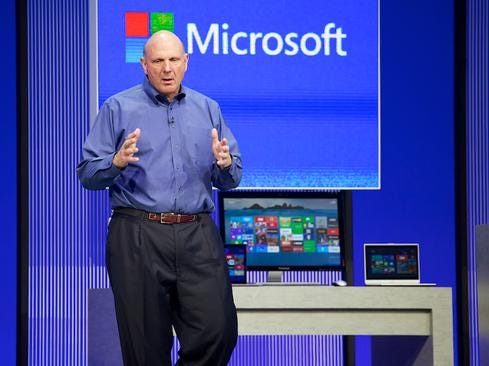Microsoft Researchers Seek Performance-Based Cloud Pricing PatentMicrosoft Researchers Seek Performance-Based Cloud Pricing Patent
Cloud pricing scheme based on performance levels, instead of units of time, would be interesting play against rivals such as Amazon Web Services.


Microsoft In 2013: 7 Lessons Learned
Microsoft In 2013: 7 Lessons Learned (Click image for larger view and for slideshow.)
Two Microsoft employees have applied for a patent on a cloud pricing scheme based on the customers' ability to set the performance levels of a cloud service. Customers would be guaranteed the designated level of performance, based on the quoted price.
The patent application illustrates how guaranteed performance levels may play a larger role in future use of cloud services than they do currently. A common criticism of on-demand pricing, such as that used by Amazon Web Services, is that it provides an hour of service time without any guarantee of how well the system will run. Specific things such as I/O levels can be set with some of Amazon's larger servers, along with a fee for that guaranteed performance.
Performance metrics can be difficult to discern for the cloud user and often go unreported voluntarily by the service providers. Netflix famously discovered the "noisy neighbor" problem inside Amazon, when its virtual server was loaded onto an already busy host and its neighbors sapped tiny fractions of a second from its expected I/O rate. Netflix found performance vagary unacceptable and solved the problem by ordering servers on hosts that it dominated. That way, if there was a resource hog in the neighborhood, it would be Netflix. Not every cloud user has that option.
The fact that the performance issue might be one of the few ways to pry open the door to Amazon Web Services' growing customer empire seems also to have occurred to Google, which emphasized its ability to supply "consistent performance" as it announced the general availability of Google Cloud Platform in December, along with an Amazon-like price cut.
The Microsoft pricing approach allows customers to either bid a price they're willing to pay or to be quoted a price based on the system's estimate of the resources needed to deliver that performance. The Microsoft employees filed for international patent protection on June 20, with an announcement of the application Dec. 27 by the World Intellectual Property Organization.
[Want to learn more about Amazon's high performance instance types? See Amazon Adds PostgreSQL, Big C3 Servers]
The names on the patent were those of Navendu Jain and Ishai Menache. Jain is a Microsoft researcher in the Seattle area. He studied at the University of Texas at Austin, graduating in 2008 with a Ph.D. in computer science and joining Microsoft in July of that year, according to his profile on Linkedin. He did his undergraduate and master's work at the Indian Institute of Technology in Delhi.
Ishai Menache joined the Extreme Computing Group at Microsoft in Redmond in 2011. A graduate of the Technion-Machon Technologi Le'Israel, he previously worked as a hardware engineer at Intel for three years.
The pair teamed up to produce an approach to pricing that appears to make performance, as well as time used, a key element of the pricing model. "For batch application-type jobs, performance parameters include a work volume parameter and a deadline," the WIPO description reads. "For an interactive-type application job, example performance-related parameters may include an average load parameter, a peak load parameter, an acceptance rate parameter, a minimum capacity parameter, a maximum capacity parameter, and/or a time window parameter over which load is specified."
As customers enter such parameters into the pricing system, they may bid on what they are willing to pay for such a job, with the system deciding whether it has the resources to accept it at the bid price. Or the system can simply return a quote at which it will do the job in a given amount of time. Microsoft has not made any announcement that it is about to adopt such a pricing scheme. But its Azure cloud service is already geared to charge by the minute, not the hour. The smaller time increments might make it simpler to implement performance-based pricing than a system that's ruled by-the-hour pricing.
Charles Babcock is an editor-at-large for information, having joined the publication in 2003. He is the former editor-in-chief of Digital News, former software editor of Computerworld and former technology editor of Interactive Week.
The DevOps Challenge Can the trendy tech strategy of DevOps really bring peace between developers and IT operations -- and deliver faster, more reliable app creation and delivery? Also in the DevOps Challenge issue of information: Execs charting digital business strategies can't afford to take Internet connectivity for granted.
About the Author
You May Also Like






